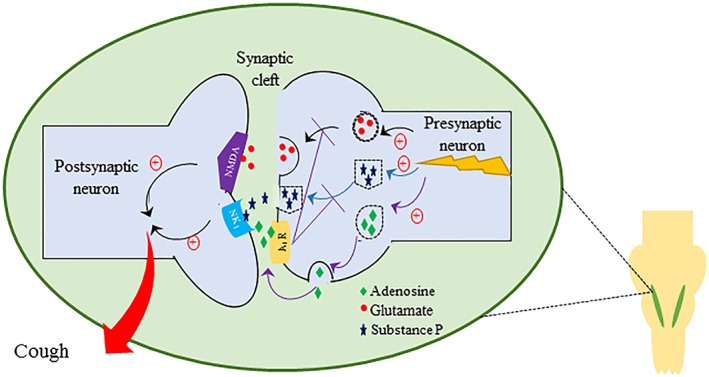Figure 7.

Summary of our findings and a proposed mechanism for the interaction between the adenosine/A1 receptor and glutamate/GluN1 (NMDA) and the substance P/NK1 receptor signalling pathways in controlling reflexes such as cough and airway obstruction. Blockade of the A1 receptor results in an increased cough response and airway obstruction that is reversed following antagonism of the GluN1 and NK1 receptors. This suggests that stimulation of airway nerves results in an increased central adenosine release which, via the A1 receptor, limits the cough response possibly by reducing central glutamate and substance P release. We therefore propose that in conditions such as CHS, this cough inhibitory adenosine pathway may be dysfunctional.
